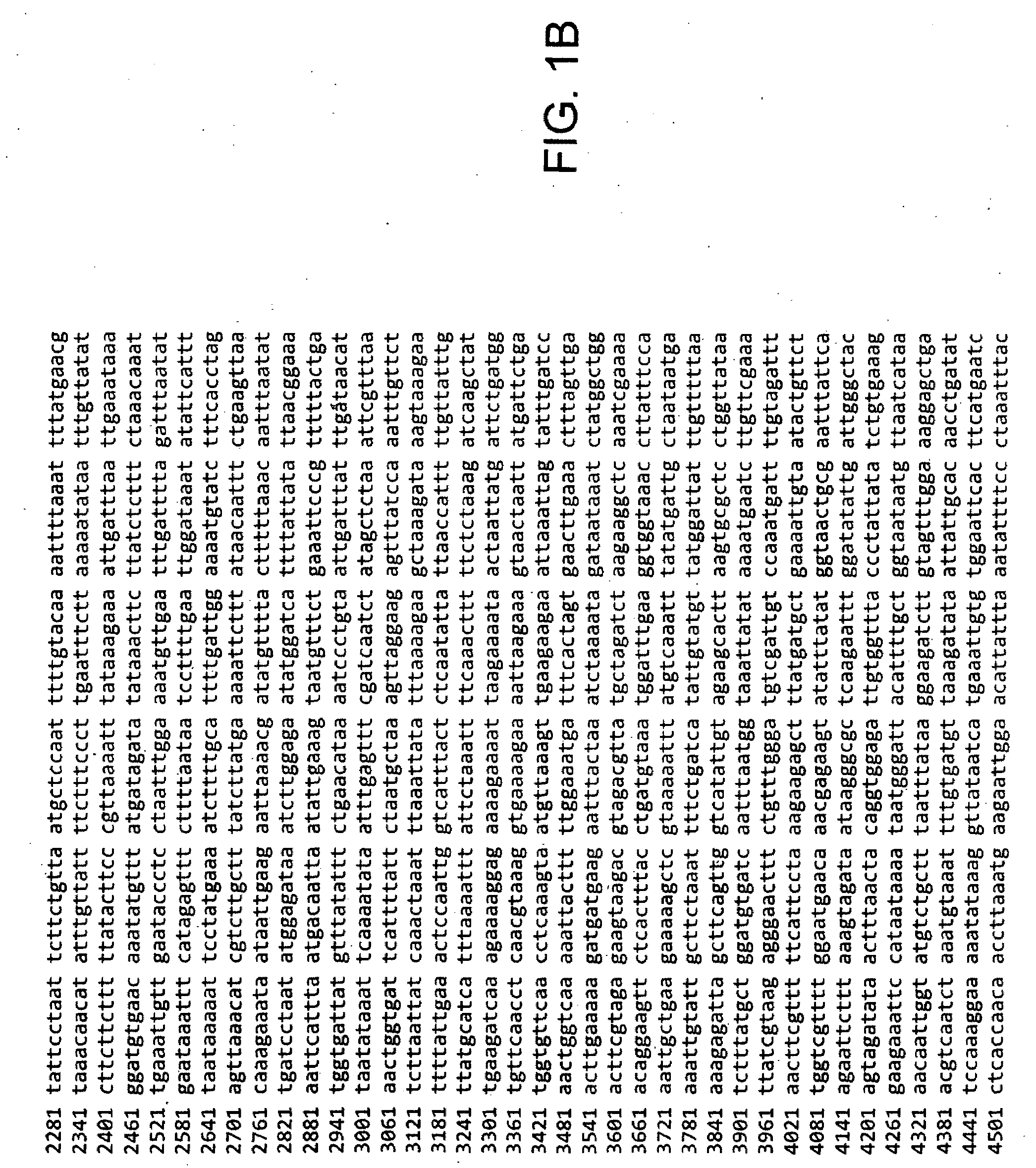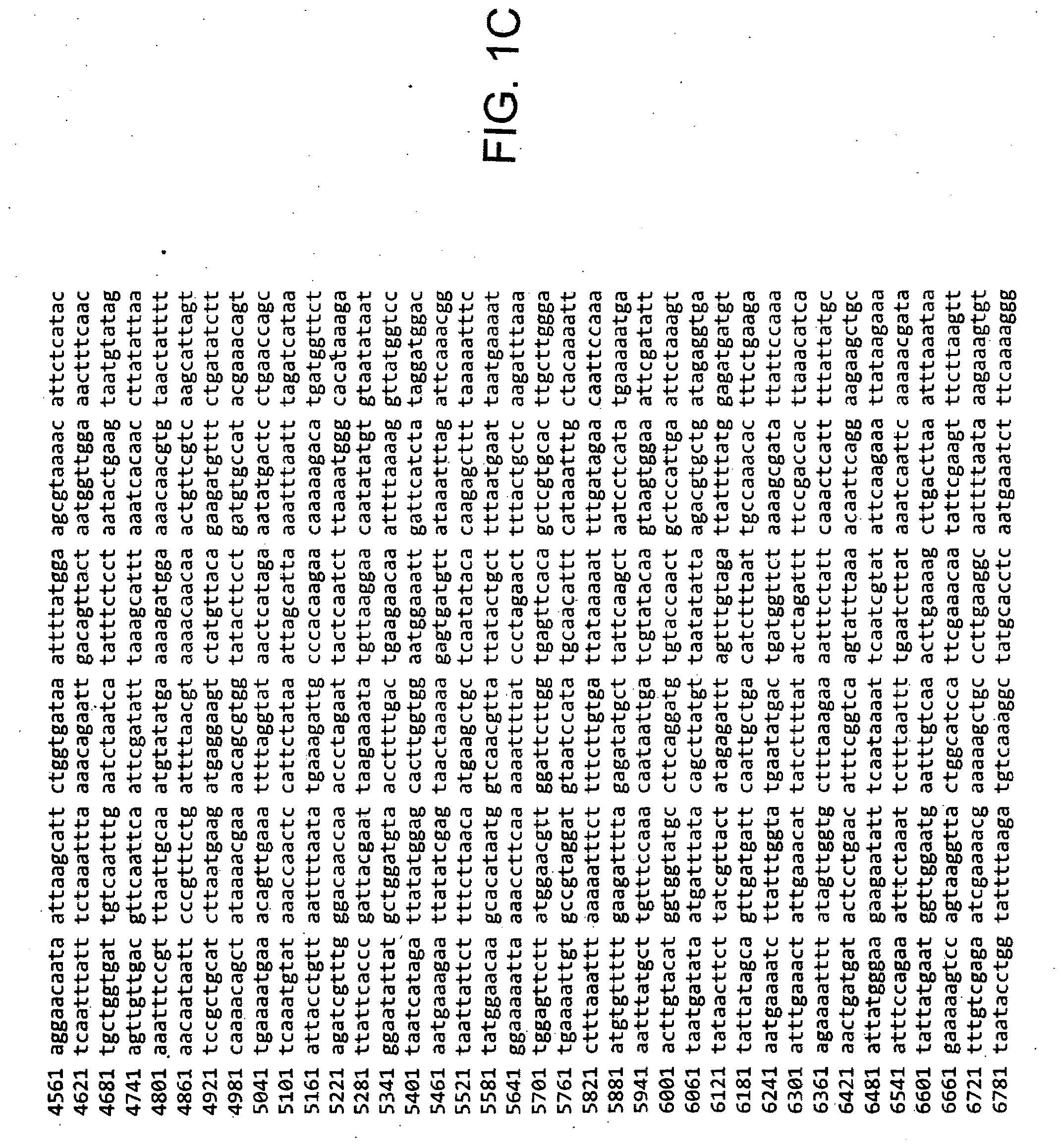Solenopsis invicta virus
a technology of solenopsis and invicta, which is applied in the field of biological methods and products, can solve the problems of fire ants, a danger to wildlife, nesting birds and animals, and damage to farm equipmen
- Summary
- Abstract
- Description
- Claims
- Application Information
AI Technical Summary
Problems solved by technology
Method used
Image
Examples
example 1
[0046]A one-step reverse transcriptase polymerase chain reaction (RT-PCR) was used t6 identify SINV-3-infected S. invicta ants. A 20 ml scintillation vial was plunged into a fire ant mound in the field for several minutes to collect a sample of the worker caste. The ants were returned to the laboratory and RNA was extracted from about 10-20 ants using TRIZOL reagent according to the manufacturer's directions (Invitrogen, Carlsbad, Calif.). cDNA was synthesized and subsequently amplified using the One-Step RT-PCR kit (Invitrogen) with oligonucleotide primers p705-SEQ ID NO 2 and p707 ID NO 4 (Table 4). Samples were considered positive for the virus when a visible amplicon (about 72 nucleotides) was present after separation on about a 1.2% agarose gel stained with ethidium bromide. RT-PCR was conducted in a PTC 100 thermal cycler (MJ Research, Waltham, Mass.) under the following optimized temperature regime:[0047]1 cycle at about 45° C. for about 30 minutes;[0048]1 cycle at about 94° ...
example 2
[0055]A series of nine 5′ RACE reactions were conducted to obtain the upstream sequence of SINV-3 genome using the 5′ RACE system (Invitrogen, Carlsbad, Calif.) and primer walking. cDNA was synthesized for about 50 minutes at about 48 degrees C. with approximately 2.5 μg of total RNA extracted with Trizol from purified SINV-3 particles (as described above in Example 1) with a gene-specific oligonucleotide primer (GSP, Table 1), the RNA template was degraded with RNase H, and the cDNA was purified. The 3′ end of the cDNA was polycytidylated with terminal deoxynucleotidyl transferase and dCTP. The tailed cDNA was then amplified with a nested, GSP (3′ end) and an abridged anchor primer (AAP). Gel purified amplicons were ligated into pCR4-TOPO vector, transformed into TOP10 competent cells (Invitrogen, Carlsbad, Calif.) and sequenced by the Interdisciplinary Center for Biotechnology Research (University of Florida). (See Tables 1 and 2)
[0056]Two 3′RACE reactions were conducted with the ...
example 3
[0062]Tissue tropism of SINV-3 was examined by dissecting different tissues or groups of tissues and quantifying the number of SINV-3 genome equivalents in each respective preparation by quantitative PCR (QPCR). This experiment was conducted for mated queens, workers, and 4th instar larvae. Ice-chilled fire ant workers and queens from SINV-3-positive colonies were placed on a glass microscope slide, and head, thorax, and abdomen were separated with a surgical blade under a Leica MS5 dissecting microscope. The head and thorax were placed directly in Trizol and the abdomen was immersed in 1 mM Tris-HCL, pH approximately 8.0, for further dissection. Tissues were isolated and removed from the abdomen with micro-dissecting forceps in the following order: crop, poison sac, midgut, hindgut, Malpighian tubules, fat body (queens only), ovaries (queens only), and the remaining abdominal carcass. Fourth instar larvae from SINV-3 positive colonies were dissected to the following groups: Malpigh...
PUM
| Property | Measurement | Unit |
|---|---|---|
| diameter | aaaaa | aaaaa |
| density | aaaaa | aaaaa |
| accelerating voltage | aaaaa | aaaaa |
Abstract
Description
Claims
Application Information
 Login to View More
Login to View More - R&D
- Intellectual Property
- Life Sciences
- Materials
- Tech Scout
- Unparalleled Data Quality
- Higher Quality Content
- 60% Fewer Hallucinations
Browse by: Latest US Patents, China's latest patents, Technical Efficacy Thesaurus, Application Domain, Technology Topic, Popular Technical Reports.
© 2025 PatSnap. All rights reserved.Legal|Privacy policy|Modern Slavery Act Transparency Statement|Sitemap|About US| Contact US: help@patsnap.com



